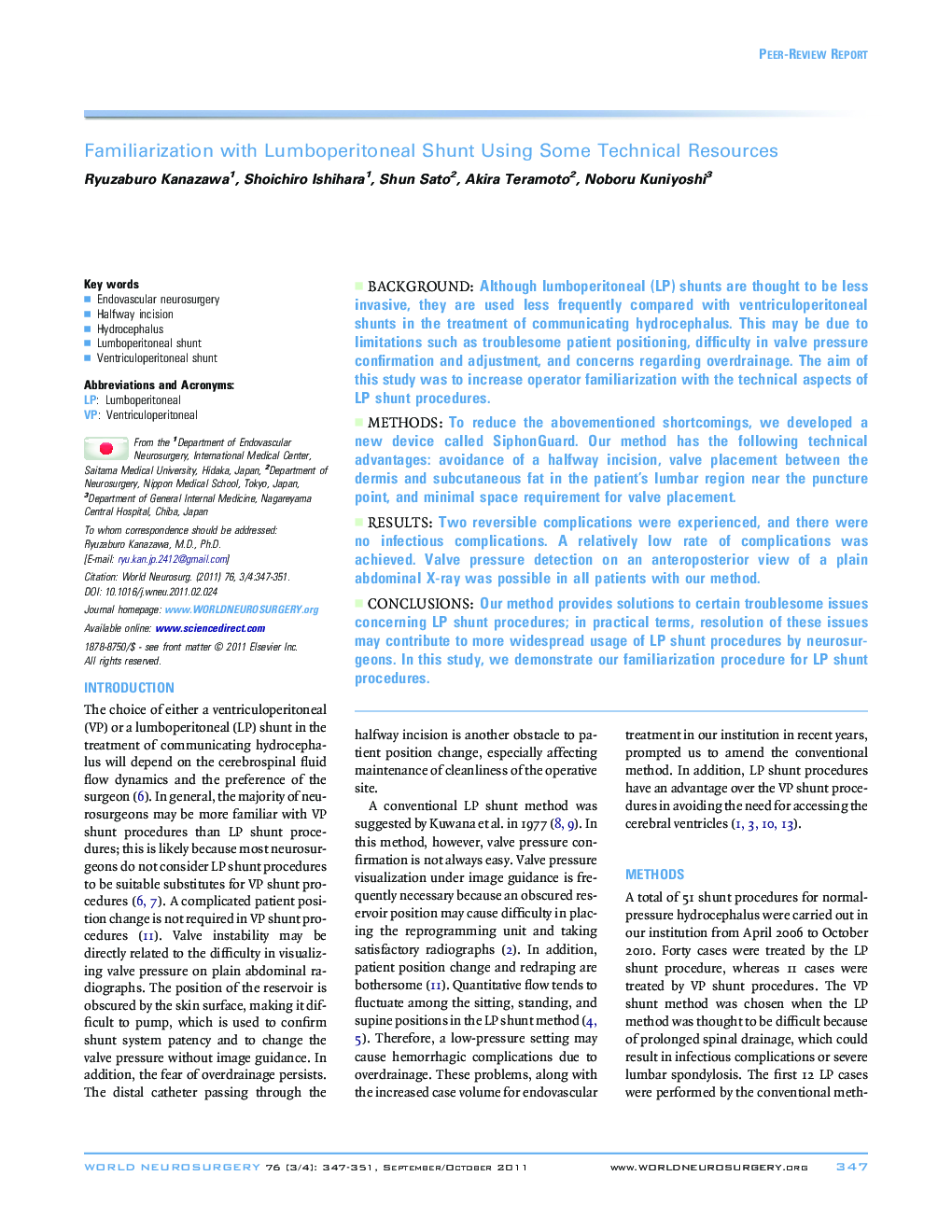| Article ID | Journal | Published Year | Pages | File Type |
|---|---|---|---|---|
| 3096796 | World Neurosurgery | 2011 | 5 Pages |
BackgroundAlthough lumboperitoneal (LP) shunts are thought to be less invasive, they are used less frequently compared with ventriculoperitoneal shunts in the treatment of communicating hydrocephalus. This may be due to limitations such as troublesome patient positioning, difficulty in valve pressure confirmation and adjustment, and concerns regarding overdrainage. The aim of this study was to increase operator familiarization with the technical aspects of LP shunt procedures.MethodsTo reduce the abovementioned shortcomings, we developed a new device called SiphonGuard. Our method has the following technical advantages: avoidance of a halfway incision, valve placement between the dermis and subcutaneous fat in the patient's lumbar region near the puncture point, and minimal space requirement for valve placement.ResultsTwo reversible complications were experienced, and there were no infectious complications. A relatively low rate of complications was achieved. Valve pressure detection on an anteroposterior view of a plain abdominal X-ray was possible in all patients with our method.ConclusionsOur method provides solutions to certain troublesome issues concerning LP shunt procedures; in practical terms, resolution of these issues may contribute to more widespread usage of LP shunt procedures by neurosurgeons. In this study, we demonstrate our familiarization procedure for LP shunt procedures.
